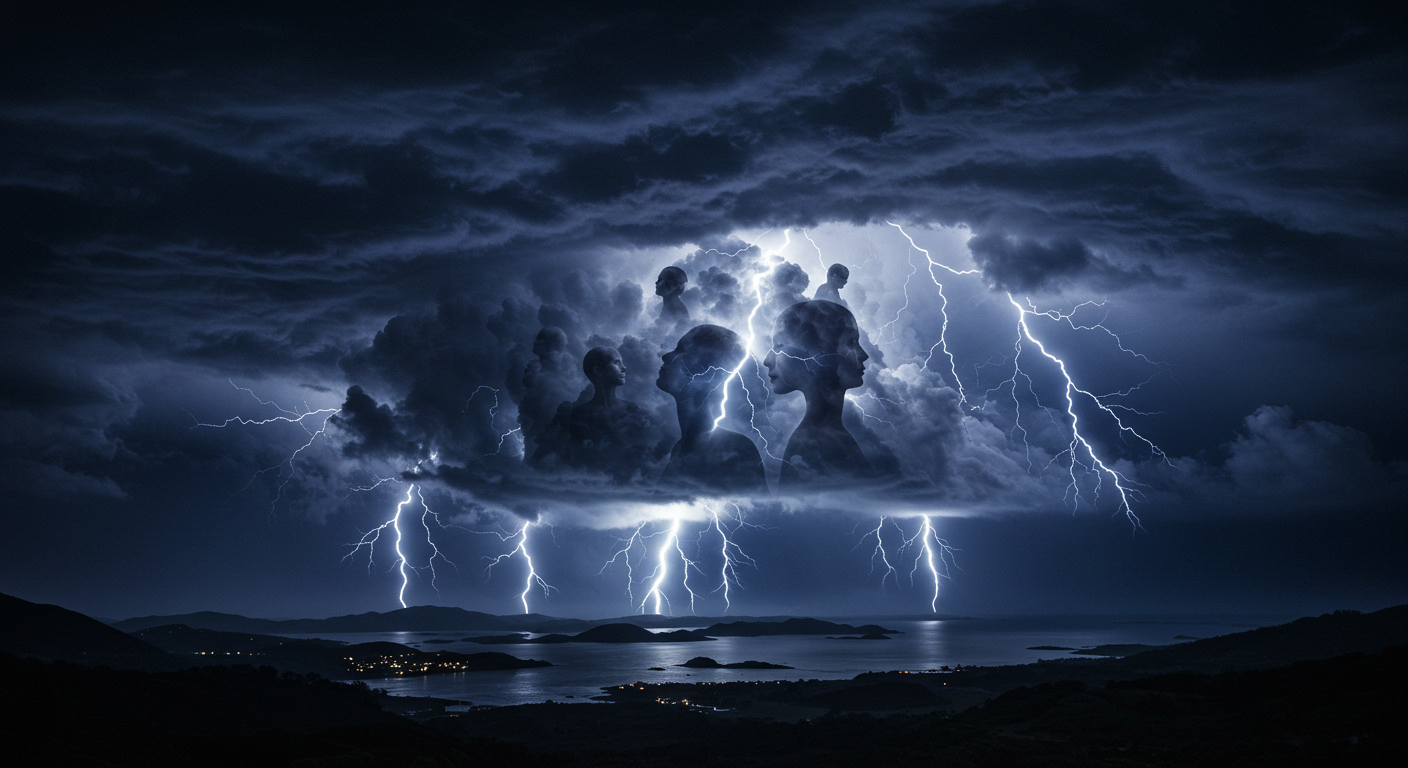In a world where ideas shift as quickly as the weather, stormuring stands as a compelling symbol of transformation. The term captures the essence of turbulence, power, and renewal. It can describe both natural and emotional forces—moments when chaos reshapes the landscape of life or thought. Whether used metaphorically or literally, stormuring speaks to the human fascination with change and the energy that drives it.
This article explores stormuring in its full context: from its roots and interpretations to its cultural, artistic, and philosophical implications. It delves into how stormuring reflects the power of transformation and the beauty hidden within disorder.
The Origins and Meaning of Stormuring
The word stormuring evokes imagery of storms—tempests filled with thunder, wind, and motion. Linguistically, it combines “storm” with a suffix suggesting continuous action or process, making it a vivid metaphor for ongoing turmoil and transformation.
It implies not just a storm itself but the act of storming, the process of natural or emotional energy manifesting. In this sense, stormuring represents vitality—the heartbeat of evolution in nature and humanity. It symbolizes both destruction and creation, reminding us that growth often comes through upheaval.
Stormuring in Nature: A Dance of Energy
In nature, stormuring is everywhere. From rolling thunderclouds over the sea to shifting sands in deserts, it embodies motion and energy. Natural phenomena like hurricanes, ocean currents, and volcanic eruptions all represent stormuring’s essence—the balance between chaos and renewal.
Stormuring, as seen in weather systems, is more than violent wind and rain. It’s a process through which the earth maintains equilibrium. Every storm redistributes heat, moisture, and energy across regions, maintaining the planet’s ecological rhythm.
Just as a storm purifies the sky, stormuring refreshes the natural cycle, washing away stagnation to make way for renewal.
Emotional Stormuring: The Inner Tempest
Humans experience their own forms of stormuring within their emotional landscapes. Anger, grief, passion, and inspiration can all create internal turbulence that mirrors a storm’s unpredictable nature.
Emotional stormuring, though chaotic, often leads to clarity. It pushes individuals to reflect, adapt, and grow stronger. Artists, writers, and thinkers have long channeled their inner stormuring into creativity, transforming personal struggles into works of meaning and beauty.
Psychologically, stormuring symbolizes catharsis—the cleansing release that follows emotional turmoil. It suggests that transformation often requires disruption, that healing is born from chaos.
Cultural and Mythological Interpretations of Stormuring
Across cultures, stormuring finds resonance in myths and legends. Ancient civilizations revered storms as manifestations of divine power. In Greek mythology, Zeus ruled the skies, hurling thunderbolts to assert cosmic order.
In many indigenous traditions, storms represented messages from spirits or ancestors—a sign of transformation or cleansing. These narratives echo the idea of stormuring as an agent of renewal, where destruction paves the way for rebirth.
Even modern storytelling uses stormuring as a symbol of conflict and change. From epic fantasy battles under stormy skies to emotional turning points in cinema, the storm motif continues to illustrate the power of transformation.
Stormuring in Art and Literature
Art has long captured the spirit of stormuring. Painters like J.M.W. Turner and Caspar David Friedrich used storms to depict the sublime—a mixture of awe and fear before nature’s power. Their stormy seascapes and skies evoke emotional stormuring, showing how turmoil can be breathtakingly beautiful.
In literature, stormuring often mirrors a character’s internal struggle. Shakespeare’s King Lear features a tempest that reflects the king’s descent into madness and his eventual awakening. Romantic poets like Shelley and Byron also used storm imagery to express rebellion and passion.
Modern artists reinterpret stormuring in digital media and installations, blending sound, motion, and light to simulate the sensory experience of chaos and rebirth.
Philosophical Dimensions of Stormuring
Philosophically, stormuring represents the paradox of existence—the harmony within chaos. It embodies the ancient principle of duality: order emerging from disorder, creation following destruction.
In Eastern thought, this aligns with the Taoist balance of yin and yang. Stormuring becomes the dynamic interplay between opposing forces, each necessary for the other’s existence.
From a psychological standpoint, stormuring reflects Carl Jung’s idea of individuation—the process of integrating the conscious and unconscious mind through conflict and synthesis. Stormuring, then, is not just an event but a journey toward wholeness.
The Modern Metaphor of Stormuring
In today’s world, stormuring can describe the constant motion of social, technological, and cultural change. From digital revolutions to environmental shifts, humanity lives in an age of perpetual stormuring.
Technology disrupts norms, politics polarize societies, and global movements challenge outdated systems. Yet, like a storm that clears the air, these upheavals often pave the way for innovation and progress.
In business, stormuring symbolizes adaptation—the willingness to embrace transformation rather than resist it. Companies that understand this concept thrive by channeling disruption into creative energy.
Stormuring and Creativity
Creative minds often find inspiration in stormuring. The tension between chaos and order fuels imagination. Writers craft epic conflicts, musicians compose symphonies of tension and release, and visual artists capture dynamic motion in color and form.
Stormuring represents the artist’s internal battle—the struggle to turn emotion into expression. It’s a reminder that creativity is rarely born in calm waters but in the turbulence of thought, feeling, and experimentation.
The Spiritual Side
Spiritually, stormuring is seen as a cleansing force. It clears stagnation from the soul, allowing new understanding to emerge. Many meditation practices use visualization of storms to symbolize emotional release and purification.
In this sense, stormuring becomes an inner process of awakening. It invites surrender to forces beyond control, trusting that after the storm, peace will come with renewed strength and clarity.
Modern Media and Technology
Digital creators have adopted the term stormuring to describe aesthetic and dynamic effects—animated visuals, abstract soundscapes, or AI-generated art that mimic the patterns of chaos.
In gaming and cinematic design, stormuring represents immersive energy: swirling light, moving textures, and evolving forms. This technological interpretation bridges the natural and digital worlds, proving that stormuring transcends mediums.
Environmental Stormuring and the Planet’s Renewal
From an ecological viewpoint, stormuring highlights the planet’s resilience. While natural storms can be destructive, they also maintain environmental balance. Lightning enriches soil with nitrogen, and floods redistribute nutrients vital for growth.
Understanding stormuring in this context reminds us that destruction is part of creation’s cycle. Sustainable living means embracing this natural rhythm rather than fighting it. Humanity’s challenge lies in harmonizing with stormuring instead of intensifying it through pollution and climate change.
The Balance Between Destruction and Creation
Every storm has its aftermath—a stillness that follows fury. This quiet renewal symbolizes the essence of stormuring. It teaches acceptance of impermanence and the beauty of evolution.
In personal, social, or natural forms, stormuring reminds us that change is not an end but a transition. Growth demands disruption. The winds that tear down also shape new horizons.
Conclusion
Stormuring is more than a word—it’s a philosophy of life, a recognition of the unstoppable energy that drives transformation. It exists in nature’s patterns, in human emotion, in art, and in society.
By understanding stormuring, we learn to see chaos as potential, to find creativity in conflict, and to welcome change as a natural force of progress. The next time you witness a storm—inside or out—remember that within its turmoil lies renewal, waiting to emerge.

